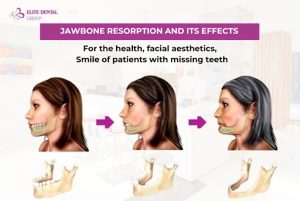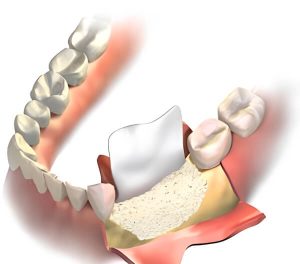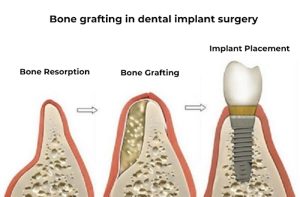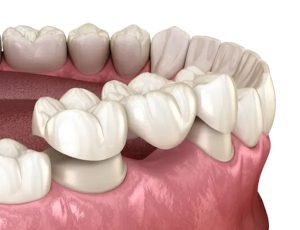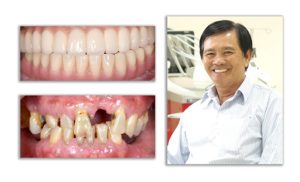Table of content
Many people say that after losing a tooth or having a tooth extracted for a period of time, their face and oral condition change, the cheeks are sunken, the jawbone in the position where the tooth was lost is concave, and the adjacent teeth are misaligned. into each other. This is the phenomenon of jaw bone loss. So how long does it take for jaw bone loss to lose teeth? Let’s find out with Elite Dental in the following article!
1. What is jaw bone loss?
The jawbone acts as a “fulcrum” to help support and maintain the stability of the tooth roots and support chewing activities. In particular, the jaw bone will grow stronger and stronger when receiving force from chewing and tearing food regularly.
Jaw bone loss (or tooth root loss) is the phenomenon of reducing bone density, height, quantity and volume of the alveolar bone and bone surrounding the tooth root. This condition can appear in either the upper or lower jaw. Some common causes of jaw bone loss include tooth loss, periodontitis, traumatic bite, etc.
Jawbone resorption is a serious complication that often occurs after prolonged tooth loss or due to periodontal disease. Resorption of the tooth socket significantly impacts the jawbone structure and the overall aesthetics of the face. Therefore, it is crucial not to be complacent and to actively seek timely remedies. Let's…
2. How long does it take for jaw bone loss to lose teeth?
On average, 3 months after tooth extraction, bone density will gradually decrease. By the 6th month, the bone will be reduced by about 25%. After 1 year, bone loss can account for about 45 – 60%. However, accurately determining the bone resorption time and bone resorption rate depends on each person’s constitution and health status.
Not to mention, the process of jaw bone loss takes place silently, without causing pain or specific symptoms at first. Therefore, the jaw bone gradually disappears without the patient even knowing. If not treated promptly, it can lead to many unpredictable consequences such as gum recession and periodontitis; Teeth are misaligned, bite is difficult, chewing is difficult, and easily shaken; Sunken cheeks, wrinkled and sagging skin.
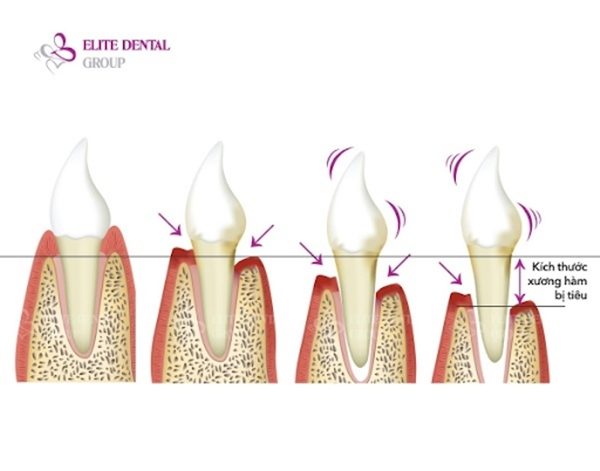
3. Types of jaw bone loss after tooth loss
Jaw bone loss comes in many different forms depending on the location of the lost tooth, specifically:
3.1 Vertical bone loss
Vertical bone loss means that the part of the jawbone below the gums will be concave and deeper than the surrounding jawbone areas. Over time, the gum area at the site of bone loss also gradually shrinks.
3.2 Horizontal bone loss
The width of the jaw bone where the tooth root is lost will gradually shrink horizontally, at the same time the surrounding bone area will expand and gradually encroach into the space where the new bone is lost. This condition will cause the adjacent teeth to shift, causing loss of aesthetics.
3.3 Bone loss in the sinus area
Bone loss in the sinus area is a condition in which the top of the sinus overflows downward. At the same time, the width of the sinuses will also increase if the patient does not apply timely treatment.
3.4 Bone loss in the entire face
This condition often occurs in cases where many teeth are lost in both the upper and lower jaw. When the entire face has bone loss, the patient’s mouth will be concave and many wrinkles will appear.
Harmful effects of jaw bone loss need attention
Depending on how long it takes for tooth loss to occur and the specific amount of jaw bone loss, you will have to face more or less dangerous complications such as:
- Impaired health: When the jawbone is destroyed, the width and height of the bone wall is significantly reduced and cannot support the gums. If this condition persists, the gums will recede and the gum wall will gradually thin. This creates an opportunity for bacteria to grow, causing headaches, seriously affecting health.
- Causes loss of facial aesthetics: Jaw bone loss makes the lower jaw bone shorter, over time the cheeks become sunken, causing underbite, wrinkled and sagging skin, which is less aesthetically pleasing. These signs will be most clearly seen in people with bone loss in the entire jaw.
- Difficulty in chewing: Bone loss causes the surrounding teeth to tend to lean toward the gap, leading to bite misalignment, making the patient unable to chew normally.
- Impact on remaining teeth: Jaw bone loss can cause surrounding teeth to recede and tend to crowd into empty areas. This causes the teeth to tilt and increases the risk of tooth loss.
- Obstructing the process of tooth restoration: When the jaw has bone loss, the teeth move overlapping each other and the jaw bone is deeply concave, causing many difficulties in restoring teeth later.
4. Measures to overcome jaw bone loss after tooth loss
To limit the risks of jaw bone loss, dental implantation soon after tooth extraction is essential. In particular, implants are the most superior solution for replacing missing teeth today, as they can improve chewing function by up to 90% and prevent maximum jaw bone loss.
Implant teeth after implantation can restore outstanding chewing function, provide high aesthetics, maximize preservation of real teeth, are durable and suitable for many tooth loss conditions. Thanks to that, patients can eat and drink comfortably, smile and speak confidently, without the discomfort of other methods, and clean their teeth easily. Learn more about Dental Implants HERE.
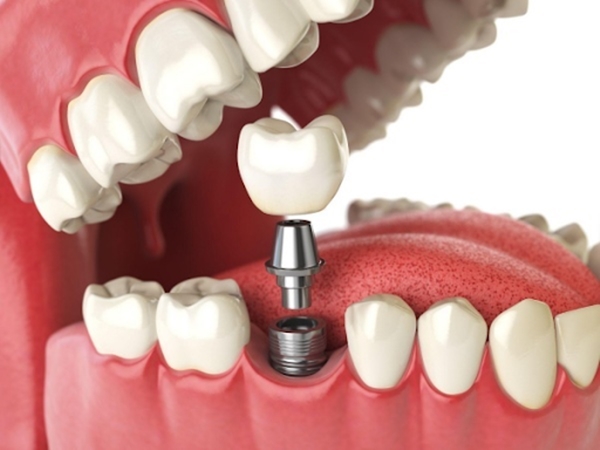
View more: > A Comparative Look at Implants and Other Prosthetics > Do dental bridges lead to bone loss? How can it be prevented?
5. How long after tooth extraction can I get an implant?
In case the jaw bone is strong, the gum tissue is good, and the health condition meets the conditions for implant placement, the patient can have the implant placed immediately. In cases where the jaw bone is heavily resorbed, the doctor will prescribe artificial bone implants or maxillary sinus augmentation before dental implants.
Bone grafting is often recommended when the jawbone density at the site of the missing tooth is insufficient to support a dental implant. Understandably, many patients wonder: Is bone grafting painful? How long does it take to heal? Let Elite Dental guide you through the details in this article. 1.…
In addition, if the tooth is infected, after extraction and cleaning of the infection, the doctor will wait a period of time before implanting the implant. In general, depending on the tooth condition, the doctor will have a suitable treatment plan for the patient.

If you have decided to have implants to restore missing teeth, you need to be careful to choose a reliable dental address and have a team of experienced doctors and highly specialized techniques to advise on a safe treatment route as well as the best time to implant implants.
Elite Dental is a specialized Implant treatment center, proud of more than 15 years of experience in implant practice, headed by Dr. Tran Hung Lam – General Secretary of the City Dental Implant Association. HCM and Chairman of ITI Vietnam (International Team of Implantology). A team of highly qualified doctors with many years of training abroad will help give accurate indications and advise on the most comprehensive and economical treatment plan for customers.
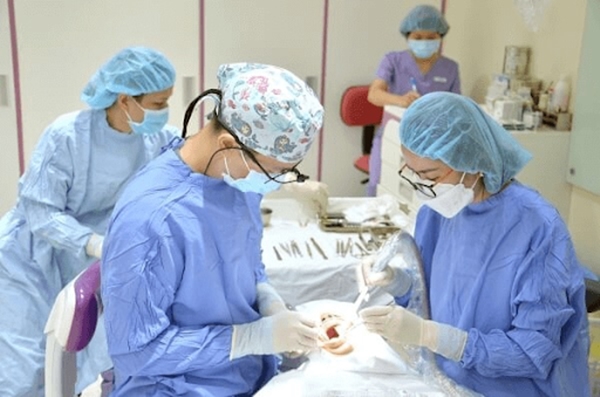
Furthermore, Elite Dental also uses genuine implant materials imported from abroad, from reputable brands such as Straumann, Hahn, Neodent, Anthogyr. Combined with modern equipment such as CBCT film machine, laser machine, PRF centrifugal camera to quickly heal wounds, Piezotome machine reduces trauma, ensures safety, wounds heal quickly and avoids cracking and rejection. Implant cylinder. In addition, doctors at Elite Dental also give detailed advice on dental care after implantation, helping teeth to be durable, prolong life, and avoid rework or unwanted problems.
With the above information, the question “how long does it take for jaw bone loss to lose teeth” has been answered. It is best that immediately after tooth extraction, you should have dental implants immediately to avoid the effects of jaw bone loss. At the same time, maintain stable chewing function and improve quality of life.
Related posts: > Can dental implants help treat bone loss? Doctor’s perspective > The Dental Implant Process: Every Step You Should Know > Multiple-Tooth Implants: Bringing Back Your Smile – Transforming Your Life"


